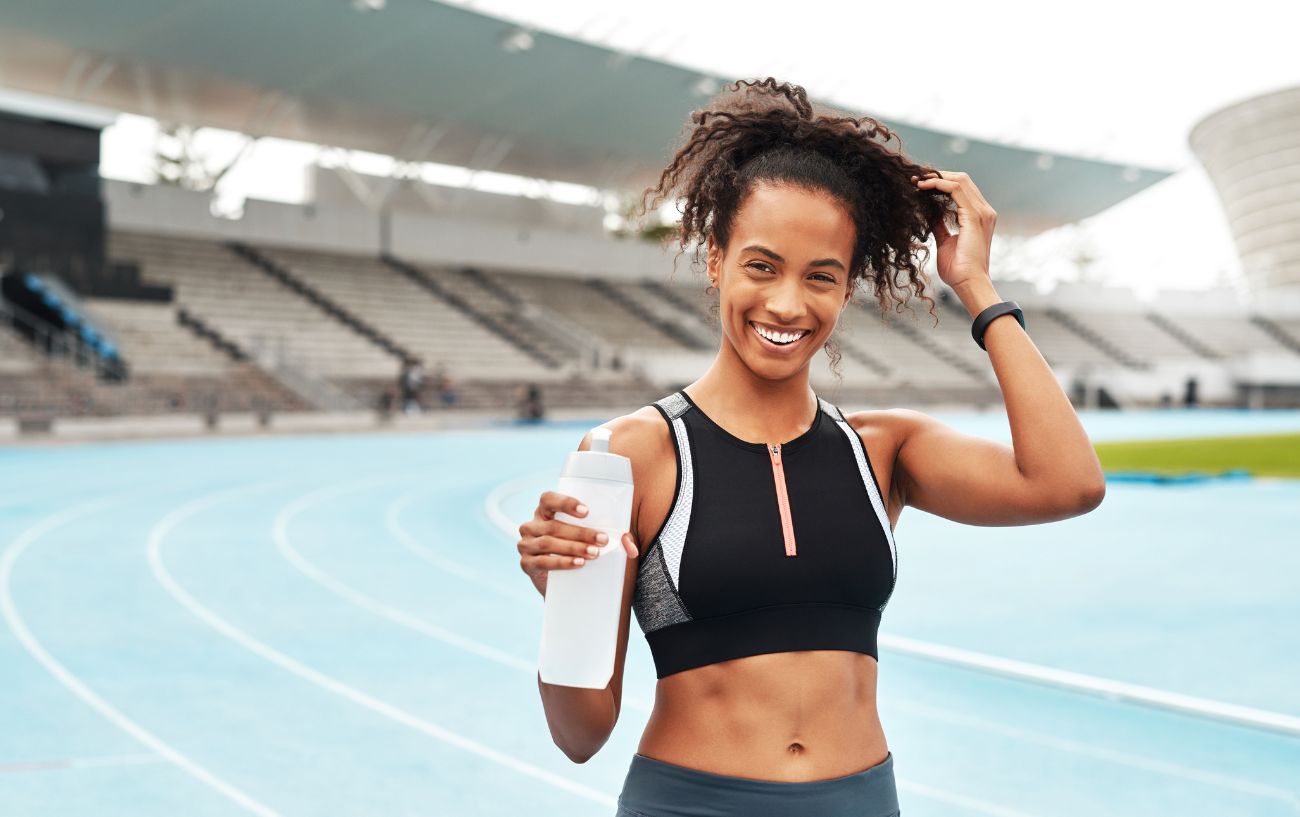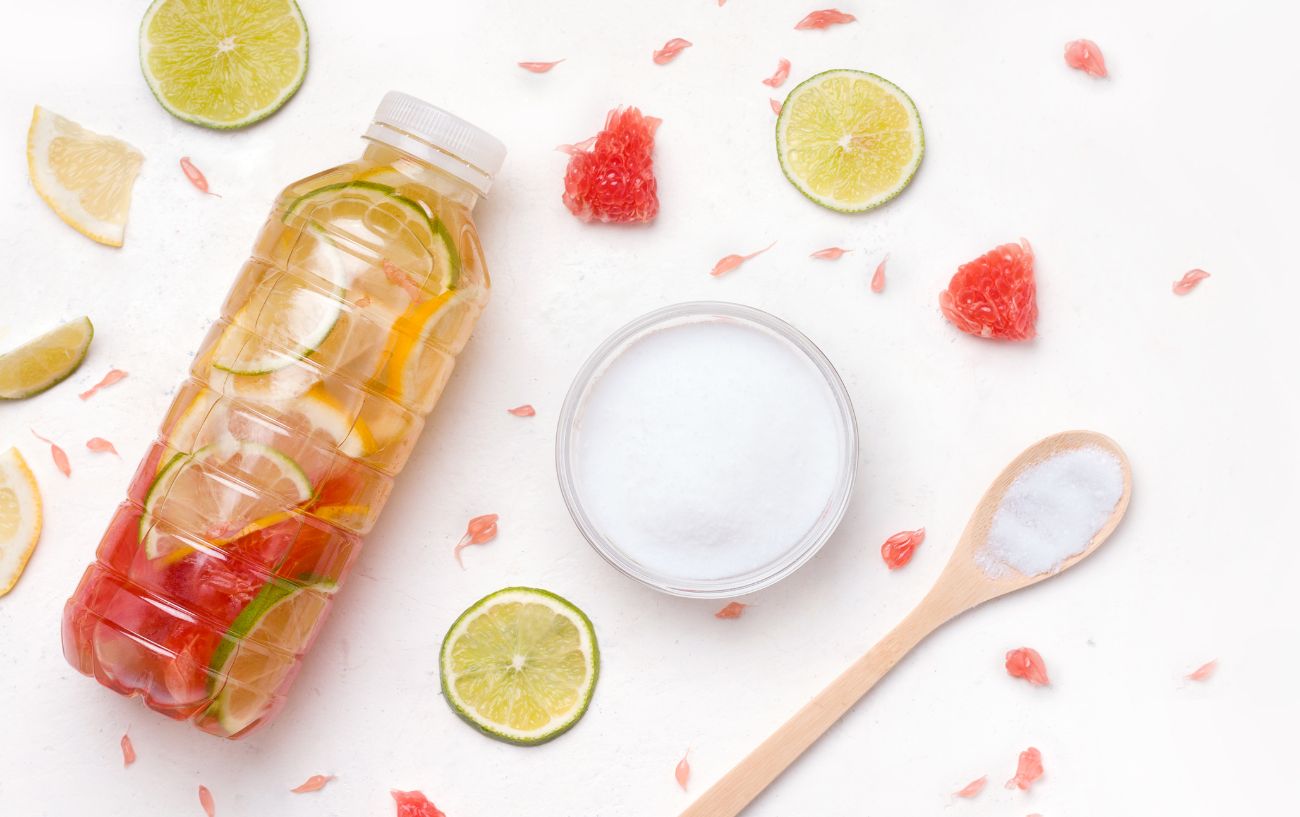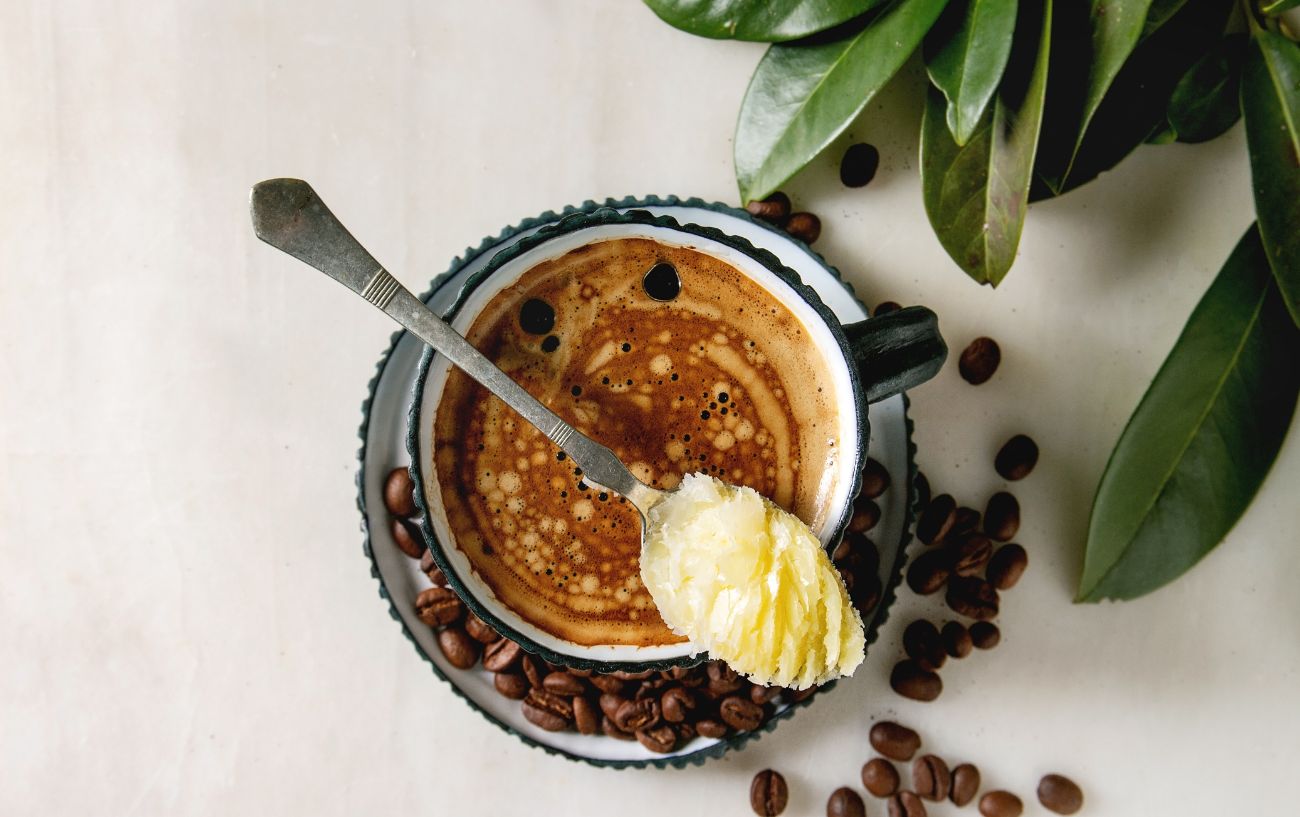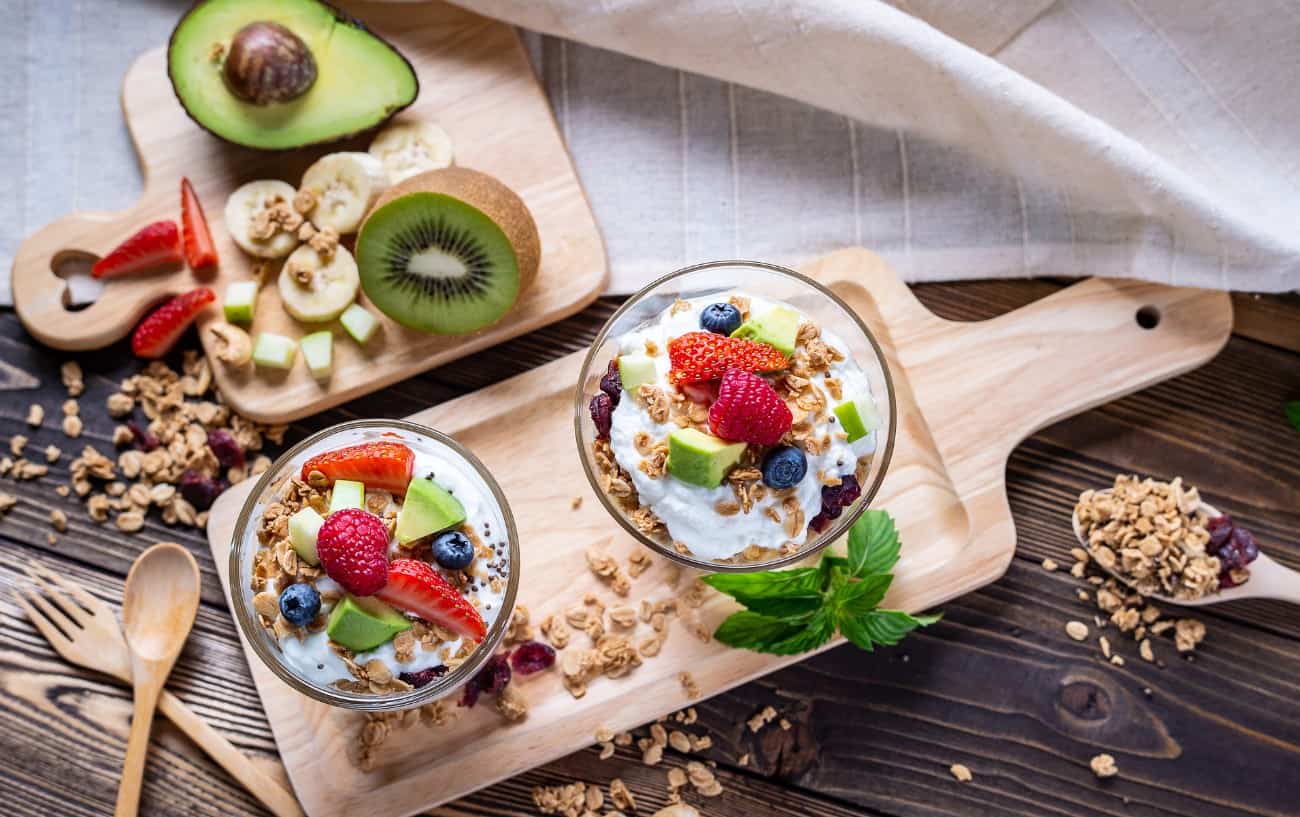Runners, cyclists, and other endurance athletes know that proper hydration and fueling are essential to optimize your performance and prevent the dreaded feeling of bonking or hitting the wall.
With that said, filling your water bottles with pre-made, commercial electrolyte drinks for every long run or long ride can quickly add up because many of the best sports drinks are quite expensive per serving.
But what about making your own homemade electrolyte drinks?
Studies suggest that dehydration of just 2% of your body weight can result in significant performance declines because blood volume drops, which increases heart rate and makes your body less efficient at regulating temperature, delivering oxygen to your muscles, and removing waste products.
Therefore, taking in enough fluids before and during your endurance workouts is critical for maintaining your hydration levels and keeping your body functioning optimally.
In this article we’ll break down some easy-to-make, thrist-quenching, and healthy homemade electrolyte drink recipes that are just as suitable as hangover, cold, or flu remedies are they are for runners and athletes.
What’s more – you can easily make them with all-natural ingredients and gluten-free, with no artificial flavorings or preservatives.
We’ll also answer a couple of FAQs about what exactly electrolytes are and whether you can just use salt to make an electrolyte drink.
Let’s dive in!

What Are Electrolytes?
Electrolytes are essential minerals and electricity-conducting substances that help to regulate chemical reactions in your body, maintain fluid balance, and help muscles and the nervous system to work properly.
The most important electrolytes are sodium, potassium, chloride, magnesium, calcium, phosphate, and bicarbonates.
Electrolytes are lost when you sweat or lose fluids through other means, hence you lose more electrolytes than usual when sweating from exercise and spending time hot weather.
A large electrolyte imbalance can cause muscle weakness and muscle cramping, headaches, confusion, irregular heartbeat, high blood pressure, and feeling sick.1Weishaupt, J. (2021, November 5). What Is an Electrolyte Imbalance? WebMD. https://www.webmd.com/a-to-z-guides/what-is-electrolyte-imbalance
Electrolyte drinks can be an important part of rehydration and preventing electrolyte imbalance.
Can I Make An Electrolyte Drink With Just Salt?
You can make an electrolyte drink with just salt by adding a small amount of salt to tap water.
This can help to replace any salts lost through dehydration. However, it will not be as hydrating or beneficial as consuming drinks with other electrolytes in addition to salt.
Furthermore, you should only add a small amount of salt. For example, a runner may lose up to 5000mg of salt after running for an hour, so in this instance, you would not want to consume more than 1/2 tsp of salt in a drink.
How to Make a DIY Electrolyte Drink
When making your own homemade electrolyte drinks, you can use plain water, but most people start with a base of coconut water since it is a hydrating fluid that naturally contains electrolytes like potassium and sodium.
The general sodium concentration in Gatorade is 160 mg per 12-ounce serving (about 430 mg per liter). There is 2,300 mg of sodium in a teaspoon of salt, so to replicate this amount, add 1/5th to 1/4th of a teaspoon of salt per liter to your homemade electrolyte water recipes.
You can use either standard table salt, sea salt, or Himalayan salt – whatever you prefer.
If you find you really enjoy the taste and health benefits of making your own electrolyte drink recipes, it’s worth it to buy individual electrolyte powders, such as potassium, magnesium, and calcium, so that you can get precise when adding the right ratio of each one to replicate store-bought sports drinks, rather than relying only on table salt as your primary ingredient.
Each electrolyte in a sports beverage imparts a unique function during exercise, and attaining a balance is ideal for performance and health. While it’s easy to get sodium from table salt (sodium chloride), the other electrolytes can’t readily be added to your recipes without distinct powders or tablets.
An inexpensive kitchen food scale is also helpful for measuring the number of grams of each ingredient you need for the electrolyte drink recipes.
Some individuals recommend adding baking soda as a beneficial electrolyte to drinks, however, the benefits have not been proven, and there may be significant risks to consuming baking soda in drinks, especially for extended periods of time.2Drinking baking soda: Dangers, benefits, and more. (2021, March 30). Www.medicalnewstoday.com. https://www.medicalnewstoday.com/articles/dangers-of-drinking-baking-soda#benefits
If you are looking for electrolyte drinks to consume whilst fasting, then to avoid breaking ketosis, make sure to omit any of the ingredients in the following recipes containing significant calories such as sugar or honey.

How To Make Your Own Homemade Electrolyte Drinks: 5 Recipes for Homemade Electrolytes
#1: Homemade Coconut Water Electrolyte Drink
Coconut water makes a great base in recipes for electrolyte drinks because it is a natural source of potassium and sodium, so it’s ideal for hydrating your body.
To make an electrolyte-replacement drink with coconut water, you can either use straight-up coconut water and add additional ingredients or dilute it with water, depending on your taste preferences and caloric needs.
Coconut water contains about 6 g of sugar per cup (240 mL), 252 mg of sodium, and 600 mg of potassium.
Therefore, if you are using non-diluted coconut water, add an additional pinch of salt per liter (or about four cups water).
If you want to replicate the isotonic concentration of most sports beverages, which provide 6% to 8% carbohydrates by volume, you will also want to add another 40 grams of sugar, but many people prefer to just add the additional electrolytes and keep it as a low-sugar, low-carb healthy drink for workouts lasting under an hour or when you’re not exercising.
If you do want to turn it into a homemade sports drink that provides carbohydrates in addition to the natural electrolytes, you can make a tasty, tropical piña colada sports drink by combining 3 cups of coconut water and one cup of pineapple juice with a quarter teaspoon of salt.

#2: Sugar-Free Electrolyte Drink Recipe
Creating a sugar-free electrolyte drink recipe is fairly difficult if you want to have a sweetness to the drink. This is because sweetness is often needed to offset the high sodium content necessary to provide the proper amount of sodium to replace that which is lost in sweat.
You don’t have to make a sweetened electrolyte drink, but it will definitely have a very salty taste if not.
There are a variety of ways to add noncaloric, sugar-free sweeteners or flavorings to homemade sugar-free electrolyte sports drinks.
For unflavored sugar-free sweeteners, you can add stevia or monk fruit sweetener as natural non-caloric plain sweeteners.
If you want to sweeten the flavor of your sugar-free electrolyte drink, you can also add Stur water flavoring drops, unsweetened Kool-Aid powder, True Lemon plus a calorie-free sweetener, Water Drops botanical drink tablets, Crystal Light Drink Mix, or sugar-free flavored syrups.
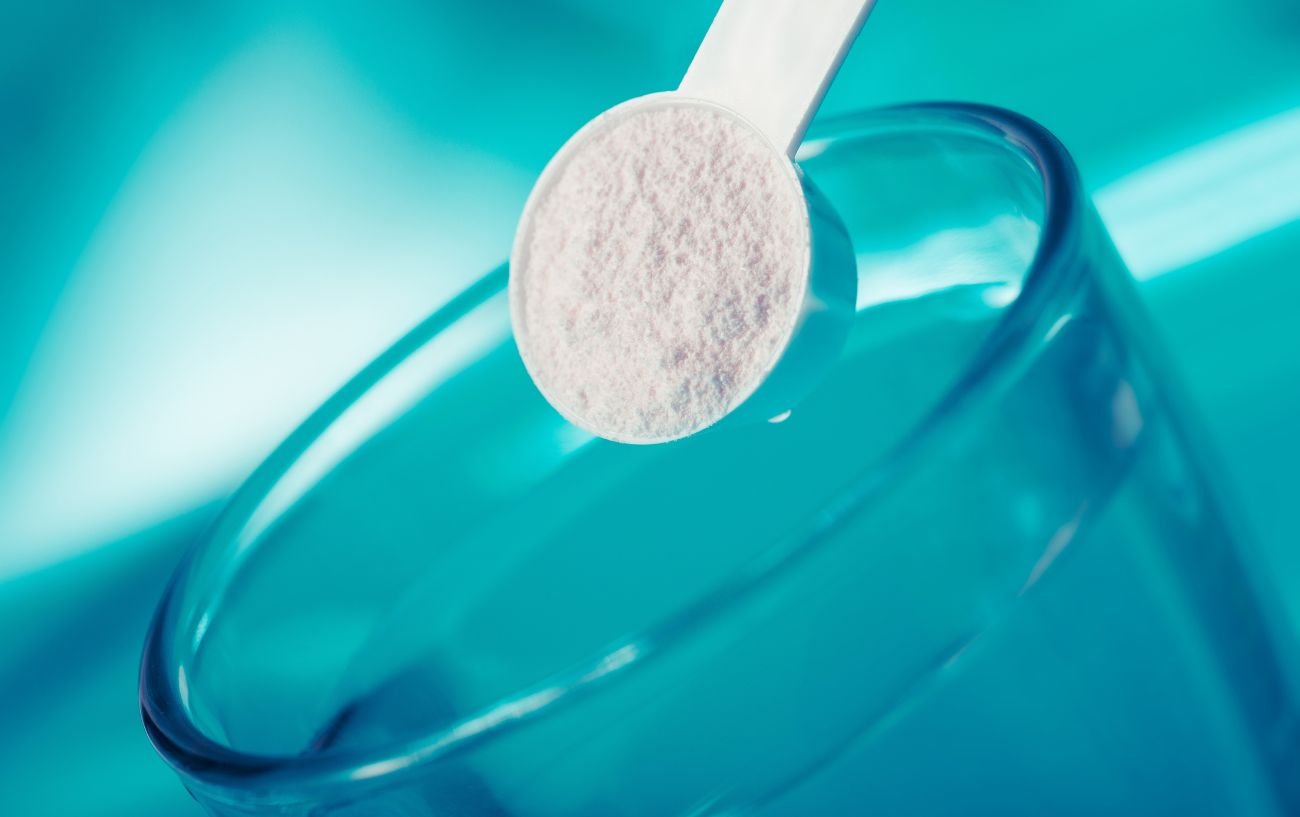
Teas such as black tea, green tea, or herbal tea are alternative noncaloric flavoring options for sugar-free electrolyte drinks.
Teabags will not add sweetness, and may even make your drink taste a little bitter, so you will probably want to offset the flavor with stevia, monk fruit extract, or another artificial sweetener.
Most of the fruity herbal teas, such as cranberry tea, apple cinnamon tea, lemon ginger tea, blood orange tea, and any type of wildberry tea, can make delicious flavor enhancers for homemade electrolyte drinks, whether or not you are going for a sugar-free electrolyte drink or a regular sweetened sports drink.
Here is a basic recipe for a homemade sugar-free electrolyte-replacement drink:
- 4 cups (32 ounces) plain water
- 1/2 cup lemon juice (you can add a small amount of sugar, or you can omit if you add a flavoring that offsets the saltiness of your electrolyte drink). Or, skip this step if you’d prefer a drink without citrus.
- 1/4 teaspoon of salt
- Optional flavoring and/or sweetener to taste as described above
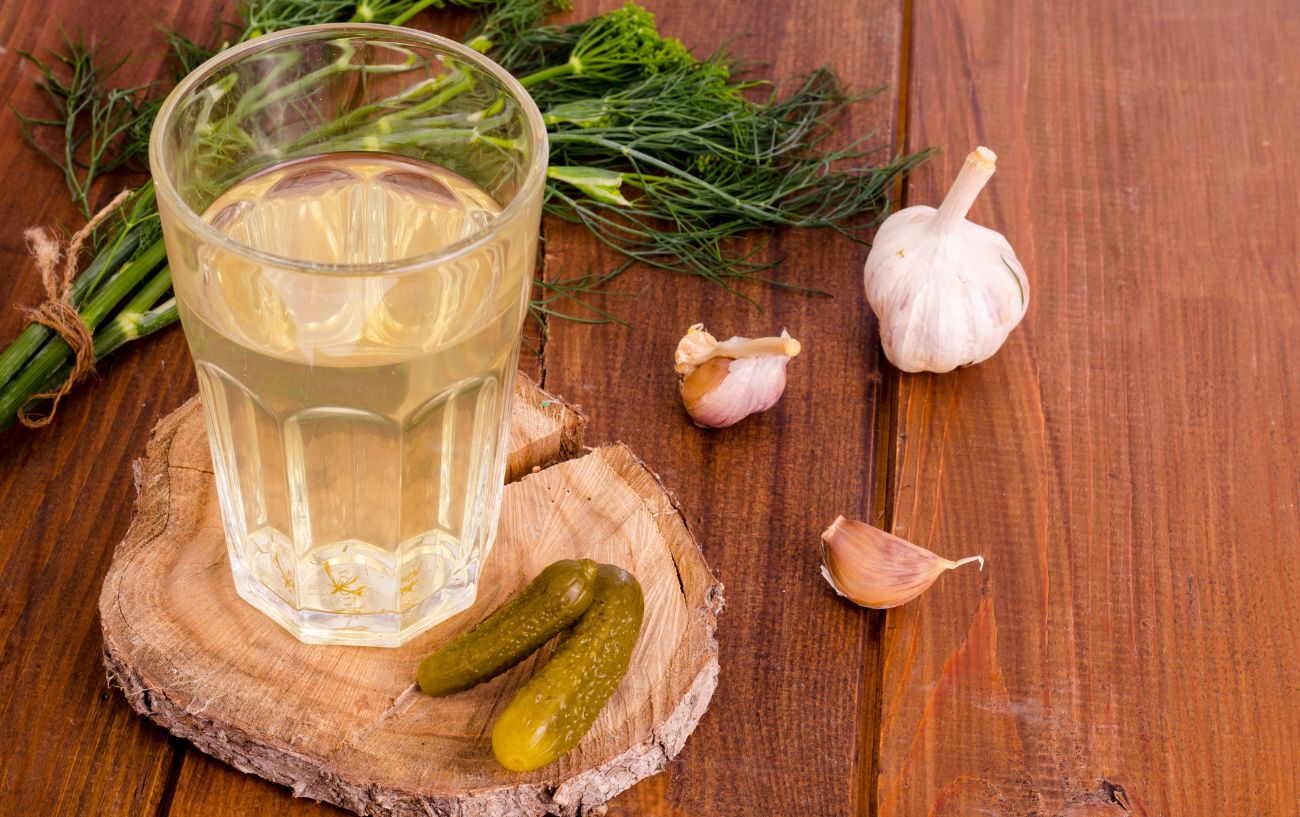
#3: DIY Electrolyte Drink Recipe With Pickle Juice
It may sound odd, but pickle juice is a surprisingly popular homemade electrolyte drink alternative for people who prefer to keep artificial colors and dyes out of their bodies but still want an electrolyte boost during exercise.
In fact, due to its electrolyte and high potassium content, pickle juice is known as a famous hangover cure in eastern europe.3@NatGeoUK. (2020, December 22). Nine hangover cures from around the world. National Geographic. https://www.nationalgeographic.co.uk/travel/2020/12/hangover-cures-around-the-world
Drinking pickle juice while running, cycling, or working out isn’t necessarily a taste that everyone will naturally gravitate towards, but many people ultimately find it to be a great solution for hydrating during exercise, especially if they want an unsweetened electrolyte drink.
To make your own electrolyte drink with pickle juice, drink straight pickle juice for a sugar-free electrolyte drink, or add 1 tablespoon (20 grams) of honey for every cup (230 mL) (or 1.5 teaspoons maple syrup). This will make approximately an 8% solution.

#4: Mint Ginger Green Tea Energy Drink
Although adding herbal tea to homemade electrolyte drinks is a great way to enhance the flavor without adding any calories, you can create a homemade energy drink using the same principles but adding caffeinated tea bags such as green tea or black tea instead.
Because caffeine is a stimulant, it can increase energy and focus. Numerous studies have suggested that caffeine is an effective ergogenic aid, particularly for endurance exercise, increasing stamina and time to fatigue, and improving overall performance.4An, S. M., Park, J. S., & Kim, S. H. (2014). Effect of energy drink dose on exercise capacity, heart rate recovery and heart rate variability after high-intensity exercise. Journal of Exercise Nutrition and Biochemistry, 18(1), 31–39. https://doi.org/10.5717/jenb.2014.18.1.31
You can make a refreshing ginger-mint green tea energy drink with electrolytes by adding 3 to 4 bags of green tea to 3 cups of cold water. Then, add 4 slices of fresh lemon, 3 sprigs of fresh mint, 3-4 tablespoons of raw honey (or 2-3 tablespoons maple syrup), and a 1-inch piece of ginger, and allow the mixture to steep overnight.
The more teabags you use, the higher the caffeine content will be for your energy drink.
To turn it into an electrolyte drink, either add 1/4 teaspoon of salt or an electrolyte tablet.
This energy drink recipe is surprisingly refreshing and zingy and has a much more unique flavor profile than most homemade electrolyte drink recipes.
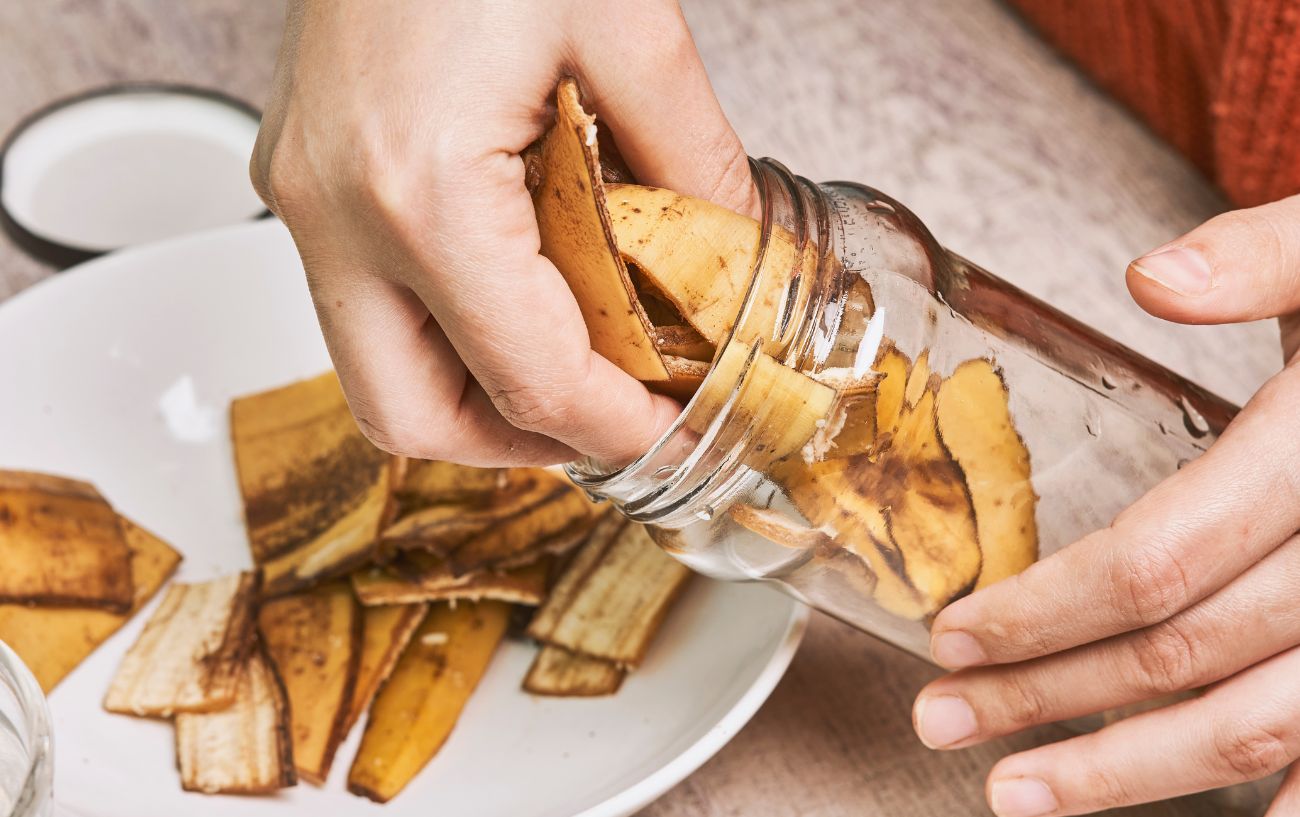
#5: Banana Peel Electrolyte Water
When you are looking into how to make electrolyte water, most recipes will include coconut water, but if you don’t want to use coconut or you have an allergy, there are a few alternatives.
It may sound odd, but you can make homemade electrolyte water by steeping whole bananas, making a tea, discarding the banana, and then cooling the simmered tea.
You can also drink the tea hot, but for workouts, you will likely want to chill the tea in the refrigerator before drinking it.
The banana peel and fruit contain essential electrolytes like magnesium and potassium, along with nutrients like vitamin B6, vitamin C, manganese, and copper.5FoodData Central. (2019). Usda.gov.
Here’s how to make a banana peel electrolyte sports drink.
- Rinse 2 bananas, slice off both ends, and add them to a pot of 4-5 cups of boiling water (1000 mL or so).
- Reduce the heat and allow the bananas to simmer for 20 minutes.
- Add cinnamon, lemon or lime juice, and honey if desired.
- Allow the mixture to cool fully. Then remove the bananas. You can add salt if you want a higher sodium content in your electrolyte water.
Making your own electrolyte drinks can be convenient when you find yourself dehydrated after an illness, and can support your workouts and training without needing to buy expensive store-bought electrolyte drinks with all sorts of added fillers and artificial flavors and dyes that you want to keep out of your body.
For more information on electrolytes and hydration, check out our guide here.
